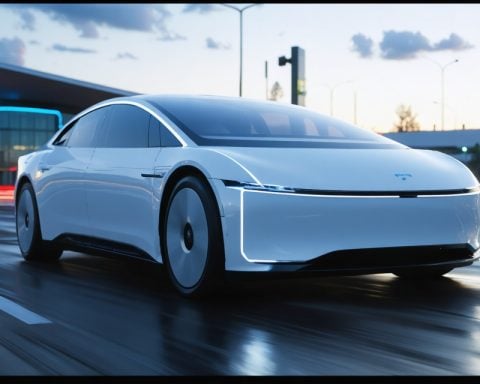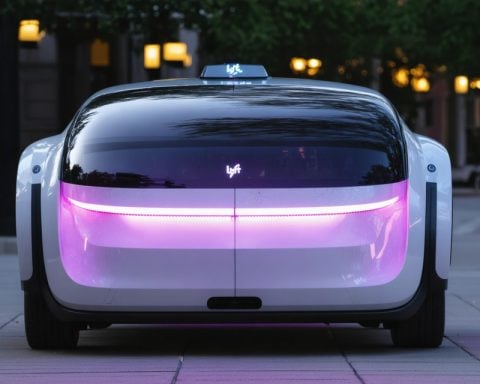Challenges in the Push for Zero-Emission Trucks
In a bid for cleaner air and sustainable transportation, California has implemented a bold mandate aimed at transitioning to zero-emission trucks. Despite this ambitious initiative, numerous challenges hinder companies from making the switch.
Fleets trying to comply with these regulations encounter significant obstacles, including the high costs of electric truck technology and the need for extensive charging infrastructure. Many companies express concern over the feasibility of transitioning their operations without incurring substantial financial burdens.
Moreover, the reality remains that dangerous exhaust fumes are still affecting communities. With the current reliance on traditional diesel trucks, public health is at risk as the emissions continue to contribute to air pollution and its related health issues.
California’s efforts to increase zero-emission vehicles reflect a broader desire for sustainability, yet they face resistance from industry players who prioritize cost and logistics. As the mandate rolls out, the state must find a balance between regulatory goals and practical solutions.
The road to a cleaner future is fraught with complications, but the urgency to address air quality and environmental concerns remains paramount. The journey towards zero-emission trucks is essential, yet filled with hurdles that must be overcome for California to truly transform its transportation landscape.
Breaking Down the Hurdles in California’s Zero-Emission Truck Mandate
Overview of California’s Ambitious Mandate
California has taken a significant step forward in combating air pollution by mandating a transition to zero-emission trucks. This ambitious initiative, part of a broader sustainability strategy, aims to minimize harmful emissions from heavy-duty vehicles that are known to contribute significantly to poor air quality and associated health risks. However, the path to realizing this goal is anything but smooth.
Key Challenges Faced by Fleets
High Costs of Adoption
A primary hurdle for fleets is the high cost of electric truck technology. The upfront investment required for electric trucks often discourages companies from making the switch, especially smaller fleets that may not have the capital to absorb these costs. Additionally, maintenance and operational adjustments can further strain financial resources.
Need for Charging Infrastructure
Another critical challenge is the lack of extensive charging infrastructure. Electric trucks require an adequate number of charging stations that are strategically located and easy to access. Without this infrastructure in place, companies face logistical difficulties in managing routes and ensuring that their vehicles can operate efficiently without running out of charge.
Ongoing Health and Environmental Impact
While California pushes towards cleaner transportation, it’s essential to acknowledge that dangerous exhaust fumes from conventional diesel trucks continue to pose a threat to public health. Communities that rely on these vehicles experience higher rates of respiratory diseases and other health-related issues related to air quality deterioration.
Industry Resistance and Practical Solutions
Resistance from industry players, driven by economic concerns and the challenge of logistics, has emerged as a significant obstacle. Many in the trucking industry prioritize short-term cost-effectiveness over long-term sustainability, complicating the implementation of the state’s environmental goals. To navigate these challenges, California must develop a collaborative approach that addresses both the industry’s needs and environmental imperatives.
Innovations and Future Trends
Despite these challenges, the zero-emission truck sector is experiencing rapid innovations. Companies are increasingly investing in research and development to create more efficient battery technologies and lower-cost electric trucks. This innovation trend not only aids compliance with mandates but also offers fleets longer driving ranges and reduced operating costs over time.
Potential Solutions and Recommendations
To support the transition to zero-emission trucks, several potential solutions and recommendations have been proposed:
1. Incentives for Fleet Upgrades: Financial incentives, such as rebates and tax credits, can help mitigate the initial cost barriers for fleet operators.
2. Expansion of Charging Infrastructure: Government investments in charging station networks will be crucial to providing the necessary support for electric trucks.
3. Tailored Regulations: Implementing flexible timelines and regulations based on fleet sizes and operational capabilities can ease the transition for more vulnerable sectors of the industry.
4. Public-Private Partnerships: Collaborations between government and private sectors can enable shared resources for infrastructure development and innovation.
5. Educational Programs: Providing training and resources for fleet managers on the new technologies and their benefits can facilitate faster adoption rates.
Conclusion
The journey towards zero-emission trucks in California represents a pivotal moment in the fight against air pollution and climate change. While significant challenges remain, the commitment to innovation and the implementation of strategic solutions can pave the way for a more sustainable transportation future. As California continues to refine its approach, a balance between economic viability and environmental responsibility will be essential to achieving its ambitious mandate.
For more information on sustainability initiatives, visit California Environmental Protection Agency.
















